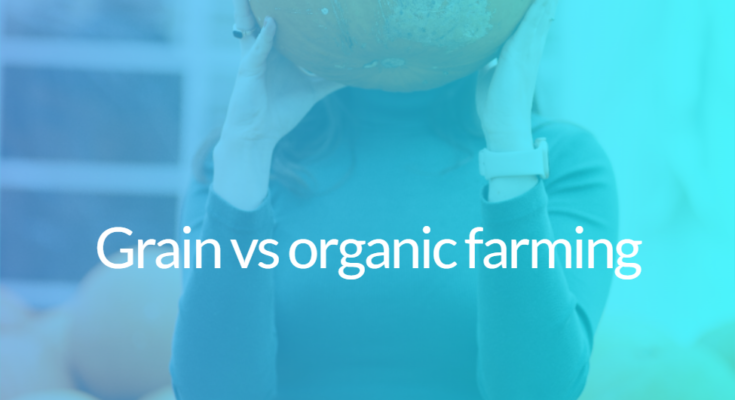Introduction:
In today’s world, there is growing concern about the impact of agriculture on the environment and human health. As a result, many people are turning to alternative farming practices such as grain farming and organic farming. While both methods have their benefits, they also have significant differences. In this article, we will explore the differences between grain farming and organic farming, highlighting their approaches, practices, and impact on the environment.
Difference between Grain Farming and Organic Farming:
1. Definition:
Grain Farming: Grain farming refers to the large-scale production of crops such as wheat, rice, corn, and barley.
Organic Farming: Organic farming is a method of agricultural production that aims to maintain soil fertility and ecological balance by avoiding the use of synthetic inputs like chemical pesticides, fertilizers, and genetically modified organisms (GMOs).
2. Use of Synthetic Inputs:
Grain Farming: In grain farming, the use of synthetic inputs like chemical fertilizers and pesticides is common. This is done to maximize crop yield and protect the crops from pests and diseases.
Organic Farming: Organic farming strictly prohibits the use of synthetic inputs. Instead, it relies on natural methods like crop rotation, composting, and biological pest control.
3. Soil Health:
Grain Farming: Due to the frequent use of chemical fertilizers and pesticides in grain farming, soil health can deteriorate over time. The heavy use of synthetic inputs can lead to soil erosion, nutrient depletion, and reduced biodiversity.
Organic Farming: Organic farming practices, such as the use of organic fertilizers, cover cropping, and crop rotation, promote soil health and fertility. These practices enhance the soil’s ability to retain water, nutrients, and beneficial organisms.
4. Environmental Impact:
Grain Farming: The intensive use of synthetic fertilizers and pesticides in grain farming can have negative impacts on the environment. Chemical runoff from farms can contaminate water bodies, leading to water pollution and harming aquatic life. Moreover, the energy-intensive nature of large-scale grain farming contributes to carbon emissions and global warming.
Organic Farming: Organic farming has a lower environmental impact compared to conventional grain farming. By avoiding the use of synthetic inputs, organic farming helps to reduce water pollution, soil degradation, and greenhouse gas emissions. The focus on maintaining ecosystem balance also promotes biodiversity and conservation of natural resources.
5. Market Demand:
Grain Farming: Grain farming caters to the mainstream food market as most of the grains produced are used in the production of processed foods, animal feed, and biofuels. The demand for grains is relatively stable but may be subject to fluctuations based on factors like weather conditions, global trade policies, and consumer preferences.
Organic Farming: Organic farming caters to a niche market of consumers who value food produced without synthetic inputs. The demand for organic products has been steadily increasing in recent years, driven by growing health and environmental consciousness among consumers.
Conclusion:
Grain farming and organic farming are two distinct agricultural practices with different approaches and impacts. While grain farming focuses on maximizing yield through the use of synthetic inputs, organic farming prioritizes sustainability, soil health, and environmental protection. Both methods have their advantages and disadvantages, and the choice between them depends on various factors such as market demand, environmental goals, and individual preferences. It is essential for farmers and consumers to understand the differences between these two farming methods in order to make informed decisions that promote both food security and ecological sustainability.
Difference between Grain Farming and Organic Farming
| Aspect | Grain Farming | Organic Farming |
|---|---|---|
| Definition | Large-scale production of crops such as wheat, rice, corn, and barley | Method of agricultural production that avoids synthetic inputs and emphasizes ecological balance |
| Use of Synthetic Inputs | Common | Strictly prohibited |
| Soil Health | Deteriorates over time due to chemical inputs | Promotes soil health and fertility through organic practices |
| Environmental Impact | High, with negative impacts such as water pollution and carbon emissions | Lower environmental impact, reducing pollution and conserving natural resources |
| Market Demand | Mainstream food market catering to processed foods, animal feed, and biofuels | Niche market driven by consumers seeking food produced without synthetic inputs |



